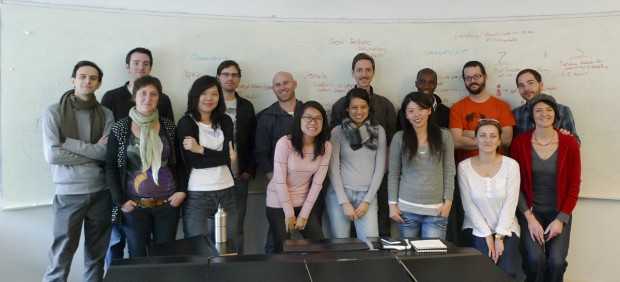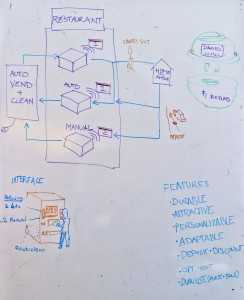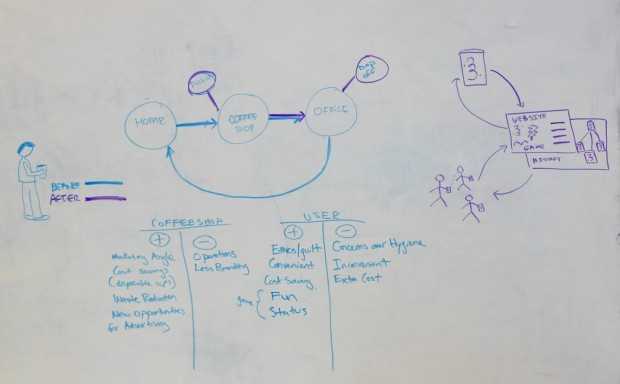Project Information
- When
- Spring 2010
- Who
- Ksenia Pachikov, Owen Schoppe

On March 27th, 13 graduate students at the Institute of Design, and a few guests, participated in the 1st Sustainability Jam Session, a pilot workshop. We tasked ourselves with designing sustainable food packaging for the Merchandise Mart, so that we could help ID answer two questions.
Participants organized themselves into 4 teams, and spent 2 hours trying different methods to solve the problem. While these methods overlapped among teams, each team’s use of them differed as they explored the many facets of sustainability. Given the limited trial, every method was helpful and each brought something unique to the discussion.
We avoided defining sustainability, and instead launched into the research. Each team was able to set their own objectives and came back with unique solutions. In essence we started at the beginning, and each team re-framed the challenge on their own. In the end, each team unearthed different principles for sustainable packaging. Together these principles form an even more powerful base from which to build new concepts.

A Mart driven initiative split into two components: an integrated product for those dining in and a reusable lunch box for those on the go.

An independent automated service marketed towards eateries to replace their packaging systems with a reusable container.

A Merchandise Mart driven initiative to replace existing napkins and utensils with a uniform selection of biodegradable substitutes for all vendors.

An external automated service to replace disposable cups with durable community cups.
Which methods are appropriate when designing for sustainability? Despite the limited nature of this experiment, we learned our tools are useful when creating sustainable solutions that address issues of use, behavior, and interaction. There is no need for us to discard our methods in search of new sustainability related ones. Sustainability requires systemic thinking, and ID methods are known for building understanding and designing systems. While additional knowledge is always a plus, it is also clear that using ID methods for understanding we were able to generate knowledge in context; displacing the need for domain knowledge. I really enjoyed watching the teams develop points of view on discrete aspects of the problem, leading to concrete concepts.
How can we learn to design for sustainability? It is clear that using hands-on workshops we can rapidly test ideas and methods. We struggled to try everything in the allotted time and it was remarkable the progress made. I personally look forward to trying this format again for more than 2 hours. Perhaps with the next round we will be able to return to the field with prototypes to test them in context. In true Bauhaus tradition, this pilot showed that learning through experience works.
But don't take my word for it, try it out for yourself.
As Daniel Erwin said, "Sustainable design should be part of everything that we do everyday, so to think of it as something different or separate is not the right way."